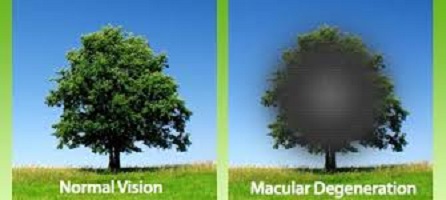
February 14, 2017
Detection and Risks of Age-related Macular Degeneration
February is designated Age-Related Macular Degeneration Awareness Month by the American Academy of Ophthalmology. Age-related macular degeneration (AMD) is the leading cause of vision loss and legal blindness among adults over 60 in the U.S. Do you know the signs and if you are at risk?
What is Age-related Macular Degeneration (AMD)?
We need what is called our "central vision" to be able to see objects clearly and to do common daily tasks such as reading, driving, identifying faces and watching television. Age-related macular degeneration (AMD) is a disease that gradually destroys this sharp, central vision. Associated with aging, the disease attacks the macula, the central area of the retina that allows a person to see fine detail. With AMD, individuals can lose all but the outermost peripheral vision, leaving dim images or black holes at the center of vision.
How is AMD detected?
Having an annual eye exam is important for detecting AMD in its early stages. But there may be some more common symptoms to look out for:
- Blurred vision
- Seeing a dark area or "blind spot" in the center of your line of vision
- Experiencing a distorted appearance when looking at straight lines or other objects
If detected, macular degeneration is diagnosed as either "dry" or "wet". Dry AMD is the more common of the two and causes a gradual central vision loss as the light-sensitive cells in the macula slowly break down. Particularly with a dry AMD diagnosis, symptoms may develop over time.
Wet AMD is less prevalent, but is more severe, causing scarring and permanent damage to retinal cells, which creates blind or blurry spots in the central vision.
Am I at risk?
Although the cause of AMD is not completely known, we do know that the greatest risk factor is increasing age. We also know that Caucasians are more likely to lose vision from age-related macular degeneration than other races according to the National Institutes of Health. Lifestyle practices like not smoking, eating a healthy diet high in green leafy vegetables and fish, exercising and maintaining normal weight and blood pressure may play a role in reducing the risk of developing AMD.
Amsler Grid
A good way to monitor your vision and potentially detect a problem is with a tool called an Amsler grid. The grid is a detection test for macular degeneration and is used to detect vision problems that may result from damage to the macula or the optic nerve.
Wolfe Eye Clinic offers free Amsler grids to be used to monitor your vision between visits to your eye care professional. If you'd like to request an Amsler grid, please fill out our form here.